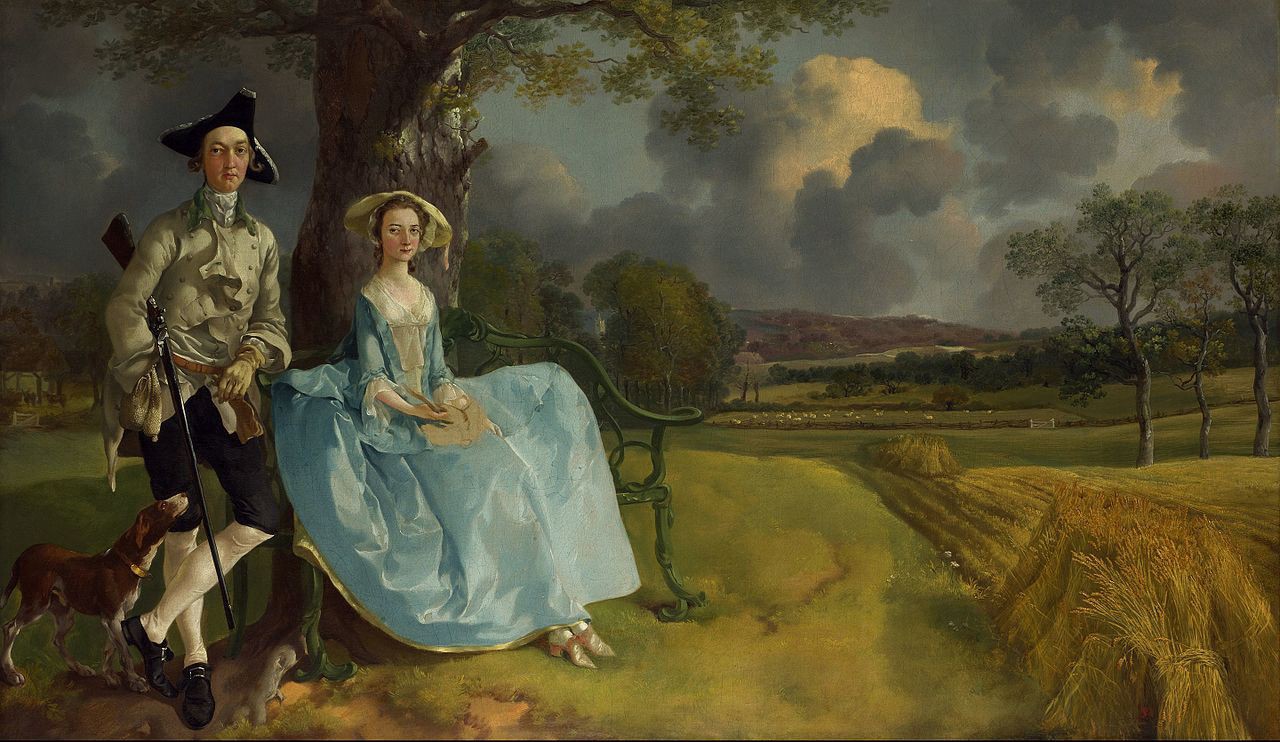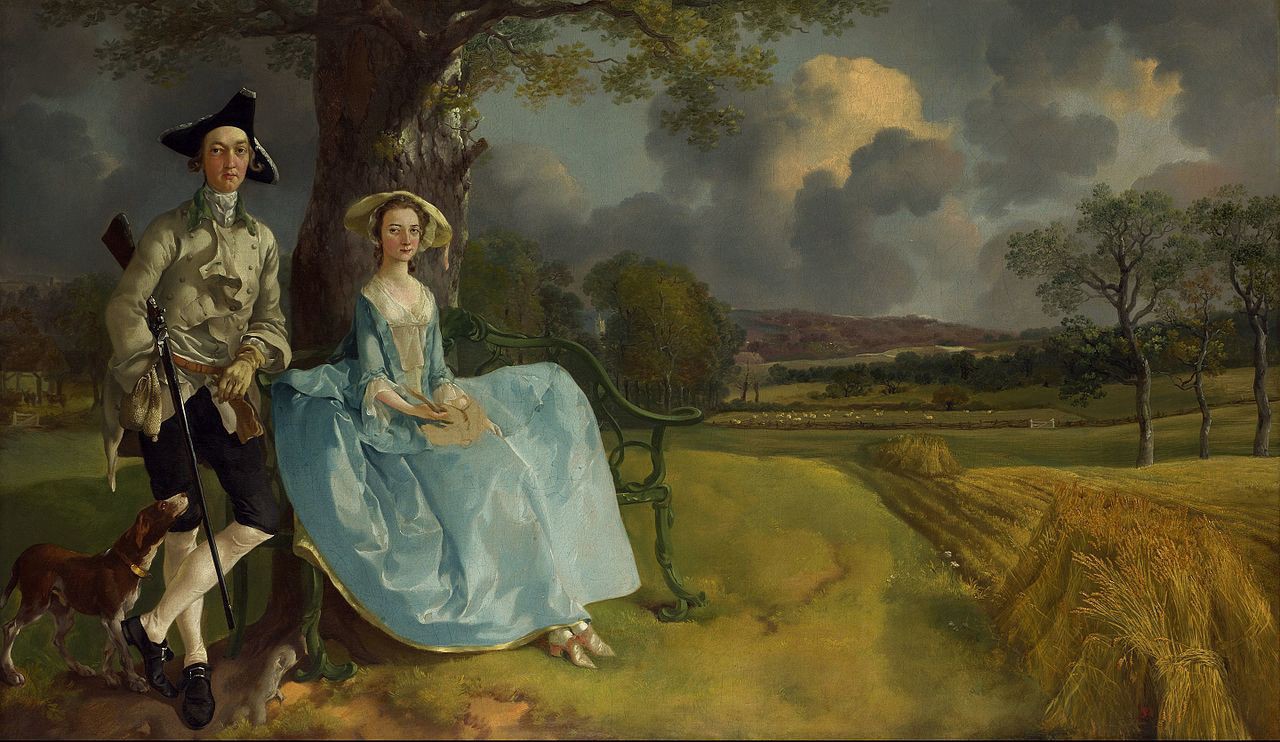Understanding the gap between personal and public responses to art
 Mr and Mrs Andrews (c. 1750) by Thomas Gainsborough. National Gallery, London. Source Wikimedia Commons
Mr and Mrs Andrews (c. 1750) by Thomas Gainsborough. National Gallery, London. Source Wikimedia Commons
Subjectivity in art is the word we use to explain how different people can respond to a work of art in different ways. Subjectivity is based on personal opinions and feelings rather than on agreed facts. A painting might be ?beautiful? to one person and ?ugly? to another, but the material object remains unchanged.
And yet, to foreground subjectivity as the most appropriate response to a work of art threatens to overlook the fact that tastes and preferences do in fact change over time, just as morals and public standards change too. To put it another way: subjective taste has an historical dimension, even if we prefer to think it doesn?t.
In art, we tend to place lot of emphasis on originality and with the breaking of traditions, and there are countless examples of artistic ?revolutions? that have failed to meet with the tastes of society at the time, only to be subsumed into the conventional appetites of later generations ? the Impressionist paintings of Monet and Cezanne being one of the best examples. One critic at the time complained that their paintings were half-finished sketches: ?Wallpaper in its embryonic state is more finished than that seascape.?
More broadly, the ways that people look at the world around them ? at works of art or anything else ? are prone to influence from so many other spheres, from political upheavals to technological advances. What counts as ?knowledge?, ?proper behaviour?, ?judgement? and ?good taste? never stay the same.
And so, inevitably perhaps, a centuries-old artwork will look different to our modern eyes than to the eyes of those who saw it when it was first made.
An ethical aspect
One of the reasons this is a dilemma is because almost everything that counts as a description of a work of art carries a moral dimension to it.
For as soon as we call something ?beautiful?, ?ugly?, ?valuable?, ?worthless, ?better? or ?worse?, then we are passing a judgement. Like patrons, we are championing certain tastes above others.
And in doing that, we cannot help but begin building a criterion for what counts as worthwhile: for what type of work we think should be shown in galleries, what the art market should treat as valuable, who should win art competitions, and all the other practical ways that some artists? work rises to the top whilst other artists? work disappears without a trace.
In this way, subjective responses bleed into the ?objective? state of things.
Let me give an example here to help flesh out the dilemma more fully.
In 18th and 19th century Europe, the popularity of landscape art reached new heights in popularity. These rural, countryside scenes have done much to influence the way that we still view the natural landscape, informing our notions of an idyllic retreat ? ?an escape to the country? ? from the shortcomings of metropolitan life.
 Mr and Mrs Andrews (c. 1750) by Thomas Gainsborough. National Gallery, London. Source Wikimedia Commons
Mr and Mrs Andrews (c. 1750) by Thomas Gainsborough. National Gallery, London. Source Wikimedia Commons
In Britain, landscape art was especially successful, emerging out of the Romantic movement which stressed the sublimity of nature and the use of human intuition rather than reason in experiencing it. Scenes of the aristocratic gentry were popular, painted by artists like Thomas Gainsborough (1727?1788), who is considered one of the most important British artists of his era.
For instance, his painting Mr and Mrs Andrews (above) shows a double portrait of a recently married couple, Robert and Frances Andrews, alongside a landscape view of the English countryside. The scene is at once inviting, gentle, serene and bucolic. The couple are placed beneath the boughs of an oak tree whilst a field of recently harvested corn stretches into the distance.
It has always been a popular painting. As recently as 1947, one admirer of the work enthused that ?there are few interpretations of civilized man in his relations with cultivated nature more lovely or psychologically profound.?
We may feel a similar warmth towards the painting. We may wish to be the people in it, to walk in those fields, to wear their clothes, or simply to admire the painting?s composition and style.
Or me might make another interpretation, as art historians began to do from the 1970s onward, who treated the painting less as a pretty countryside scene, and more an expression of the wealthy elite holding sway over the poor.
For instance ? as the art critic John Berger said ? Mr and Mrs Andrews ?are landowners and their proprietary attitude towards what surrounds them is visible in their stance and expressions.?
To understand what John Berger was talking about, it?s necessary to account for the historical circumstances: as the 18th century progressed and the economic activity of the country moved from agriculture to industry, the landed aristocracy of the period began to attach a heightened importance to images of rural activity due to a new emphasis on the productivity of their estates.
With the advent of industrialism there developed and consolidated a working-class-consciousness among the poorest elements of society, one which the richest classes at once feared and resisted.
The commercial popularity of such paintings by Gainsborough is thus understood in terms of their reassuring properties for the art-buying elite, in their depiction of a benevolent ruling classes in peaceful relations with the poorer classes and with the greater force of nature.
The flux of ideas
What I hope the above example shows is that works of art contain a dual aspect, capable of being read from a subjective perspective and from a perspective that includes the relevant historical conditions ? and that both readings may come to have a bearing on each other.
As is perhaps obvious, what exactly is included as ?relevant historical conditions? is an open question, for it depends on your interpretation of history. And hence we reach the dilemma, that everything we might say about a work of art is filled with bias and the (moral) consequences of that bias.
Thus, for anyone who looks at a work of art with more than just a passing interest, the two different types of possible reactions ? the subjective and objective response ? become much less distinct than at first glance.
An art work is as a collection of shapes, textures, colours and ideas to which we can have a personal reaction. It is also an event that happened in the past ? attempting to take account of the full scope of the artwork?s making, from its commissioning to its public reception, from the individual impulse of the artist to the wider aesthetic and social values of the time.
So, how do we make sense of this apparent contradiction?
The answer may be involve something like this: that a work of art is best seen as an object that was created, shown (in exhibitions) and re-shown (in museums) as part of a complex process of ongoing meaning-making.
At the centre of the field of art is the constant flux between the acts of the individual artist and the meaning given to and by those acts within the specific historical conditions. As the art historian T J Clark has it, ?art is one historical process among other acts, event, and structures ? it is a series of actions in but also on history.?
Rather than merely ?reflecting? overarching ideologies, social relations or tastes, artworks are prisms through which light flows: they are events which give rise to new realities, and through the ripples of those events, into and also shaping our own subjective spheres.

Would you like to get?
A free guide to the Essential Styles in Western Art History, plus updates and exclusive news about me and my writing? Download here.
Christopher P Jones is a writer and artist. He blogs about culture, art and life at his website.


